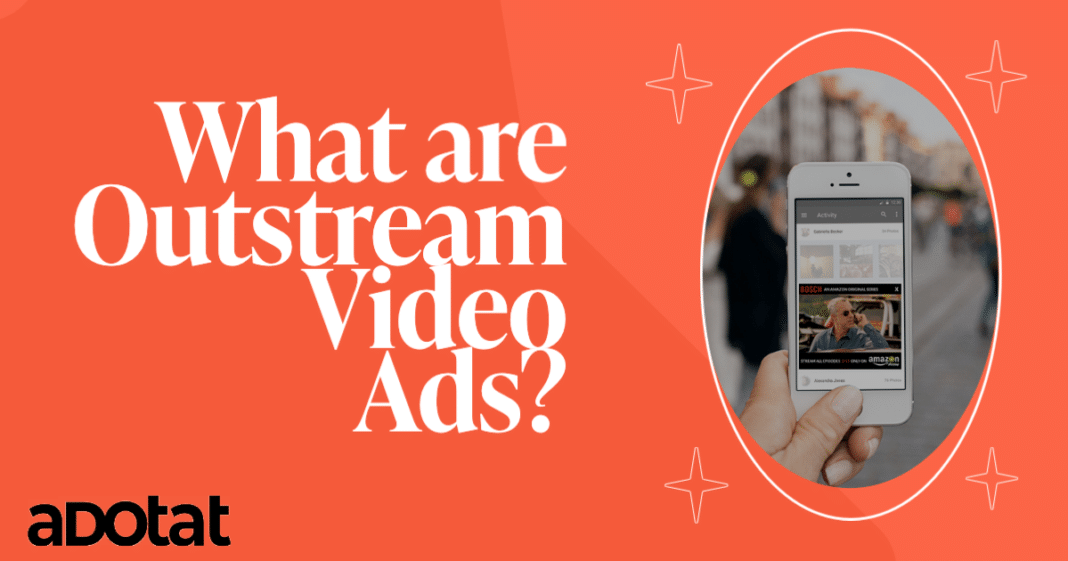There’s no doubt that online video is booming. By 2019, it’s expected to generate 15.4 billion in spend and hog 80% of all internet traffic. The reason, Eric Wheeler says in a blog post for ClickZ, is video’s ability to “cut through the clutter and engage target audiences.”
And as we know, engagement is key when it comes to advertising. Outstream ads, which are videos that play in a separate window outside of the main content area, are one of the most effective ways to achieve it.
Outstream ads are the new kids on the block. These are videos that appear in non-video environments – mainly text-based content, like articles. They are videos or images that are placed outside of the traditional online media spaces, such as websites and social media platforms. Outstream ads are generally used to reach consumers on mobile devices, as they are more likely to be engaged with video content in that environment.
Despite the fact that they’re a newer advertising medium, outstream ads have quickly become one of the most popular and effective ways to reach consumers. In fact, according to a study by Mixpo, outstream videos drove an average click-through rate (CTR) of 0.35%, compared to 0.15% for traditional display ads.
That’s because outstream videos are a great way to capture attention and create a more engaging experience for users. They can help break up long blocks of text and add some visual interest, which can make it more likely that people will stick around and read the article they’re embedded in.
Outstream ads are a great way to get your videos in front of more people, and they can also be used to target people who might not have seen your videos before. Outstream ads are shown in places where people wouldn’t normally expect to see ads, such as on websites, in apps, and in social media feeds. Outstream ads can also be used to retarget people who have already seen your instream ads.
Outstream ads are video or display ads that appear on web pages outside of video players. Because outstream ads don’t interrupt or compete with the video content, they offer a less intrusive ad experience for users. Outstream ads also provide an opportunity for brands to reach engaged viewers with high-quality video content.
According to Google, Outstream ads are typically “silent” videos that play before, after, or during other videos on websites or social media platforms. One of the most common examples of outstream advertising is the “autoplay” video ad that Facebook users often see as they scroll through their newsfeed. These ads begin playing automatically without sound, and many people simply scroll right past them without paying much attention.
Outstream ads are a form of advertising that doesn’t interrupt or impose on the user’s experience. They slot into the places usually reserved for banner ads, and users can simply scroll past if they aren’t interested. If they are interested, then they make the choice to watch. They even decide whether they want to listen to the audio or not. This makes for a more positive customer experience and also means your video views aren’t wasted.
One popular way to use them is as interstitials.Interstitials are videos that play before or after another video. They are often used to promote a product or service, and they can be very effective at getting attention. In fact, a recent study by AOL found that outstream video ads drove a 2x increase in purchase intent compared to traditional display ads.
Another common way to use outstream ads is as native videos. Native videos are videos that are embedded in the content of a website or social media platform. They look like regular content, but they have an ad embedded in them. This can be a great way to get people’s attention without interrupting their experience.
Finally, outstream ads can also be used as in-feed videos. In-feed videos are videos that are placed in the regular flow of content on a website or social media platform. They typically play automatically, which can be a great way to get people’s attention.
Paul Muret, Google’s Director of Display and Video Advertising, spoke about the importance of integrating ads into content at the DoubleClick Leadership Summit in July. If ads do not integrate well it can lead to ad blindness, or worse annoyance, and ad blocking. But with outstream video ads, you can publish video ads in all kinds of content, like editorial pieces for example. You can also publish them natively, which works toward solving the problem of ad blindness.
Outstream video ads are a great way to produce results for your brand. They provide an immersive experience that engages the viewer and can lead to better conversions than other ad units. What’s more, outstream ads are only going to become more popular as time goes on, so it’s important to get ahead of the curve now. Have you tried using outstream video ads in your marketing? If not, what’s stopping you?




